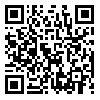Volume 26, Issue 1 (2024)
JAST 2024, 26(1): 85-95 |
Back to browse issues page
Download citation:
BibTeX | RIS | EndNote | Medlars | ProCite | Reference Manager | RefWorks
Send citation to:



BibTeX | RIS | EndNote | Medlars | ProCite | Reference Manager | RefWorks
Send citation to:
Gulyuz A, Dogan A, Peker B, Erkan M. Changes in Bioactive Compounds, Decay Rate, and Chilling Injury of Pumpkin Stored at Different Temperatures. JAST 2024; 26 (1) :85-95
URL: http://jast.modares.ac.ir/article-23-60114-en.html
URL: http://jast.modares.ac.ir/article-23-60114-en.html
1- Department of Horticulture, Faculty of Agriculture, Akdeniz University, 07058, Antalya, Turkey.
2- Department of Horticulture, Faculty of Agriculture, Akdeniz University, 07058, Antalya, Turkey. ,erkan@akdeniz.edu.tr
2- Department of Horticulture, Faculty of Agriculture, Akdeniz University, 07058, Antalya, Turkey. ,
Abstract: (2343 Views)
The effects of storage temperature on bioactive compounds, decay, and chilling injury development of pumpkins during cold storage and shelf-life periods were examined. In the present study, fruits were stored at 3°C, 8°C, and ambient temperature (control) for 180 days and, after that, fruits were stored at 20°C for 7 days to determine shelf-life performance. The lowest weight loss was found in the fruit stored at 3°C during cold storage while the highest flesh firmness was found on the fruit stored at 8°C. Total soluble solids, L-ascorbic acid and glucose contents were found to be higher in the fruit stored at 3°C compared to other storage temperatures. The highest total carotenoid content and the lowest decay incidence were recorded by the fruit stored at 3 and 8°C. Fruit stored at 3°C showed better quality parameters as compared to other temperatures under study. Although 3°C was better to protect the biochemical composition of pumpkin fruits, decay rate increased at this temperature due to chilling injury. It is concluded that the storage temperature of 8 °C was optimum to maintain fruit quality and biochemical contents and to inhibit decay during long-term storage of pumpkins.
Keywords: Cucubita moschata Duch., Postharvest storage, Pumpkin fruit quality, Shelf-life performance.
Article Type: Original Research |
Subject:
Postharvest Horticulture
Received: 2022/03/7 | Accepted: 2023/03/1 | Published: 2024/01/20
Received: 2022/03/7 | Accepted: 2023/03/1 | Published: 2024/01/20
Send email to the article author
| Rights and permissions | |
 |
This work is licensed under a Creative Commons Attribution-NonCommercial 4.0 International License. |








